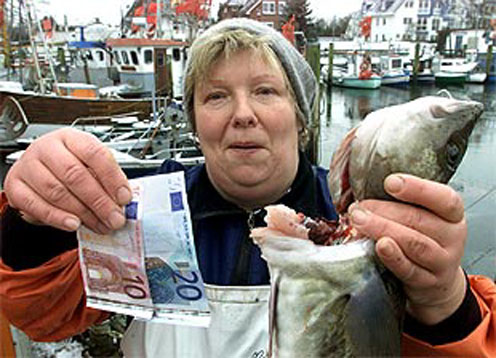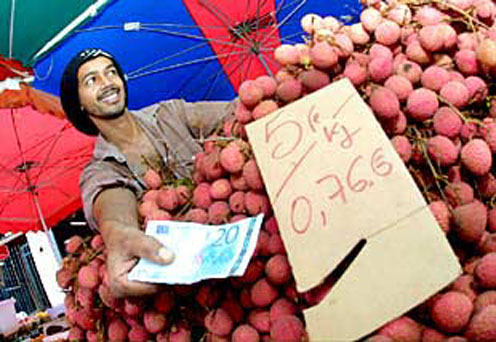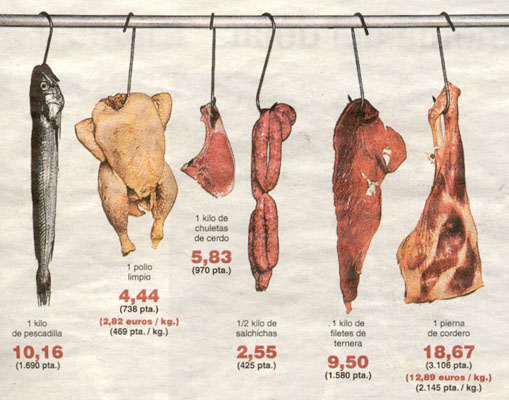The days previous to the currency switch: rounding out prices.
![]() If
you recall the conversion rates of the
participating currencies into the Euro you can see that the "translation" of
prices from domestic currencies into the new one would not be a "pretty"
process.
If
you recall the conversion rates of the
participating currencies into the Euro you can see that the "translation" of
prices from domestic currencies into the new one would not be a "pretty"
process.

![]() In the
case of Spain 1€ =
166.386 PTA so in terms of Euros, a bottle of wine priced at 700 PTA will cost:
In the
case of Spain 1€ =
166.386 PTA so in terms of Euros, a bottle of wine priced at 700 PTA will cost:
(700 PTA / 166.386) = 4.207084731€
The European Central Bank, the monetary authority for the Eurozone, established very simple rules for rounding out prices: if the third decimal is higher than or equal to 5 the second decimal increases by one unit, if the third decimal is lower than 5 the second decimal decreases by one unit.
In our example, the bottle of wine will be priced at 4.21€
![]() This is very neat on paper but it would be complete chaos if every time we were
to go shopping in Euros we had to use a calculator to make sure prices were
correctly expressed in the new currency.
This is very neat on paper but it would be complete chaos if every time we were
to go shopping in Euros we had to use a calculator to make sure prices were
correctly expressed in the new currency.

To further complicate matters some businesses would round out final prices down in order to reduce the use of small-denomination coins while some other businesses will take advantage of the confusion to round out final prices up and so collect some extra profits. This latter practice was exacerbated by the coincidence of the transition between currencies and the release of annual pricing schedules for many utilities and services (i.e.: public transportation fares, lottery tickets and prices...)

![]() Overall the artificial rising of prices was the exception rather than the norm,
although some cases were simply outrageous. In Tarragona, Spain, public bus
tickets were increased from 125 PTA (0.75€)
to 167 PTA (1€) -a
price increase of 33.3%, for purposes of "rounding out the prices in Euros"!!!
Overall the artificial rising of prices was the exception rather than the norm,
although some cases were simply outrageous. In Tarragona, Spain, public bus
tickets were increased from 125 PTA (0.75€)
to 167 PTA (1€) -a
price increase of 33.3%, for purposes of "rounding out the prices in Euros"!!!

![]() The implications of this practice go beyond business ethics or marketing
considerations. Had it become popular it would have generated inflationary
pressures (i.e.: rising costs of living) and translated into serious
macroeconomic costs. This, in fact, constitutes a very interesting topic of
research that links microeconomics with macroeconomics through the theory of
menu costs. More on this later.
The implications of this practice go beyond business ethics or marketing
considerations. Had it become popular it would have generated inflationary
pressures (i.e.: rising costs of living) and translated into serious
macroeconomic costs. This, in fact, constitutes a very interesting topic of
research that links microeconomics with macroeconomics through the theory of
menu costs. More on this later.